What Do Compression Sleeves Do + How Do They Work?
The benefits of compression are well documented. By using compression garments, we can speed up recovery after a hard workout, support our circulatory system, and avoid aches, pains, and swelling. But there are lots of options when it comes to shopping for a compression piece of clothing. Among them, compression sleeves are one of the most popular items for the lower legs.
What are compression sleeves for and how do you wear them to get the most out of them? In this article, we’ll see what they do and who they’re best suited for. We’ll also give you some tips on how to choose the best compression sleeves for you and how to use them most effectively.
What are Compression Sleeves?
Compression sleeves are cylindrical pieces of clothing that apply gentle pressure to the veins. They can be worn on the legs - typically around the calf muscles below the knee. Arm compression sleeves are also popular with those needing support and a boost in blood flow in their upper body.
Sleeves are very similar to compression socks and are put on in pretty much the same way. Unlike socks, compression sleeves allow you to wear nothing on your feet or to wear different socks. This can be important when you’re doing long hikes or runs where you want to change socks part way through the day. It’s also relevant for those who need easier access or more ventilation to their toes.
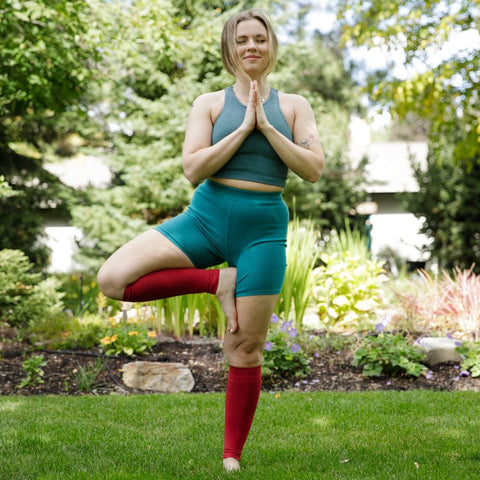
How Do Compression Sleeves Work?
Just like compression socks, sleeves exert a gentle pressure on the lower legs, particularly on the calf muscles and the shins. Graduated compression sleeves are tighter around the ankle and less tight towards the knee. This allows the compression to stimulate blood flow from the lower end of the body back towards the heart.
As a result of boosted blood circulation, compression sleeves help reduce the risk of swelling and discomfort caused by pooled blood or fluid. For those who spend their day on their feet, like teachers and nurses, this can provide a great benefit.
Studies show that compression helps muscles recover faster after a hard effort. Research also proves that compression garments could help reduce muscle damage during exercise. Finally, there are indications that the increase in blood flow reduces inflammation and soreness for athletes and casual wearers, too.
What Do Compression Sleeves Do?
Whether you’re settling in for a long plane ride where you won’t be moving around a lot, or are trying to recover from a tough workout, your lower legs will need continuous, unrestricted blood flow. Blood helps bring oxygen and nutrients to the muscles, which is essential for recovery. It also reduces inflammation and pain. Moreover, by eliminating any blockages in normal blood flow, compression sleeves reduce the risk of blood pooling in the lower legs, or even worse - of blood clots forming. Here’s how.
Enhance Blood Circulation
The tight grip on your lower legs towards the ankle, coupled with less pressure applied towards the knee, stimulates blood flow towards the heart. This means that you’re less likely to be a victim of gravity and get swollen ankles and painful calf muscles from sitting or lying down for a long time.
Compression sleeves keep the blood flowing normally, supporting your body’s natural recovery and reducing inflammation, pain, and swelling.
Reduce Muscle Fatigue
Since better blood flow means more oxygen and nutrients travel to the muscles, compression garments are great for recovering after an effort. Studies have shown a reduction in recovery times for runners and other athletes that use compression sleeves and socks as part of their post-workout routine.
Improve Athletic Performance
During exercise, compression sleeves can help reduce muscle soreness and offer additional support to the area. Especially when running, the impact with the ground causes multiple vibrations through the leg muscles. Thanks to the added support from compression sleeves, runners can minimize these and potentially reduce their risk of developing shin splints.
Although there is no clear connection between sports performance and wearing compression sleeves or socks, there is documented evidence of their positive effects on recovery. Through reduced recovery times and as they provide athletes with fresher, more energetic legs on the start line, we can also see compression sleeves as supporting athletic performance.

Speed Muscle Recovery
Delivering more blood to the muscles and ensuring therefore that they get the oxygen and nutrients required to repair after exercise, compression sleeves are a key item in an athlete’s recovery roster.
Moreover, compression sleeves have been shown to help reduce delayed onset muscle soreness (DOMS) - that post-exercise ache in the legs.
Prevent Injury
Through both increased blood circulation and added support to the lower limbs, compression sleeves can play a role in preventing injury. Their tight grip on the calf muscles and on the shins protect these areas from micro-vibrations from running or more high-impact sports like basketball. Over time, this can reduce the risk of developing shin splints, among other issues.
Once you’re back to running or playing sports after an injury, compression sleeves and socks are often used to provide additional support to the muscles and stabilize the lower legs. This reduces your risk of getting injured immediately after you’ve recovered, before you build up muscle strength again.
Who are Compression Sleeves For?
With their muscle support and pressure that boosts blood circulation, compression sleeves are great recovery tools for athletes. They can also deliver important benefits to many other people, including those suffering from particular medical conditions.
Athletes and Fitness Enthusiasts
If you regularly practice a sport that involves jumping and landing on hard surfaces (such as running, but also tennis, basketball, etc.), then you’ll know your legs take a beating. The repeated (small) shocks of landing on the ground take their toll in the long run and can lead to injuries like shin splints, Achilles tendonitis, etc.
Wearing compression garments on the lower legs plays two important roles in this case:
- Reducing the effects of micro-vibrations on the muscles and joints by supporting the tissues in the calf muscles and the legs in general;
- Helping reduce muscle fatigue during exercise and boosting muscular recovery after workouts. Through increased blood flow to the legs, compression sleeves ensure that the muscles get a much-needed influx of oxygen and nutrients to recover quicker.
Travelers and Long-Distance Commuters
Another set of people who can have great benefits from compression sleeves are those traveling long distances. On planes and trains or in cars, we don’t get to move around as much as we should. This leads to gravity pushing blood down towards the lower legs and ankles, without it coming back up towards the heart as easily as it should.

The CDC has raised warnings around the risk of blood clots and blood pooling in the lower legs during any travel that’s over 4 hours long. To reduce this, garments that support good blood circulation are essential. Compression sleeves will keep massaging your calf muscles, letting blood move normally back up to the heart from the lower legs and reducing the risk of blood clots and swelling.
People Who Sit or Stand All Day
Just as gravity pushes blood down into the lower legs when you’re sitting for long periods of time during travel, the same happens at a desk. Not getting up regularly to move and change positions can lead to swollen legs and ankles, pain in the lower legs, and even blood clots or varicose veins. If you stand around at exhibitions, shows, and in hospitals or schools, it’s a similar problem.
Compression socks, sleeves, and tights are recommended for teachers, nurses, those with desk jobs where they don’t get enough exercise, and professionals who have to stand around a lot. They’ll work on keeping blood flowing correctly and reduce swelling and discomfort.
Individuals with Certain Health Conditions
Doctors often prescribe compression wear to people suffering from medical conditions linked to impaired blood flow to the extremities. Compression sleeves are great for those with varicose veins as they stimulate circulation and help reduce discomfort and swelling.
For even more serious conditions, like deep vein thrombosis, venous insufficiency, or more, consult with a medical professional to find out the best socks or sleeves for you.

How to Choose the Best Compression Sleeves
To make the most of your compression sleeves, you need to ensure they fit perfectly. They need to be tight enough to make you feel the pressure and a gentle massage, but not so loose that they could roll down your legs. It’s also important to consider the fabric, depending on your activity and the weather conditions.
Compression Level
The first thing to look at when buying compression clothing is the compression level. This is expressed in mmHg and can be seen clearly on our website. For first-time wearers, and particularly in the case of compression sleeves, the 15-20 mmHg compression level is ideal. It means the garments apply moderate pressure to the calf muscles, without being too constraining, but still boosting blood flow.
Higher levels of compression include:
- 20-30 mmHg - firmer pressure that is usually recommended for when you’re suffering from a health condition;
- 30-40 mmHg - firm compression, prescription-only.
Graduated Compression
One thing to look out for with your compression sleeves is whether they are built to offer graduated compression. This means they are tighter around the ankles, gradually loosening as they climb up to under the knee. It’s the best way to stimulate blood traveling up towards the heart, from your lower extremities.
It’s important to note, however, that sleeves cannot offer the same graduated compression benefits that full socks do, because they are not wrapped around the ankles. This means they’re slightly less effective at preventing ankles from swelling and they cannot exert pressure on what the blood flow looks like below the ankle line. In case this is a concern, we recommend wearing open-toe compression socks to still get some more air around your feet, but get better graduated compression benefits.
Material
Most compression sleeves are made of nylon, which is flexible, versatile, and lightweight. It’s easy to wash and dry and tends to resist shrinkage, so you can enjoy your sleeves for longer.
Fit and Sizing
Make sure your compression sleeves will fit just right by measuring the circumference of your calf muscles. Based on this, our unisex sizing table will determine the best fit for you.
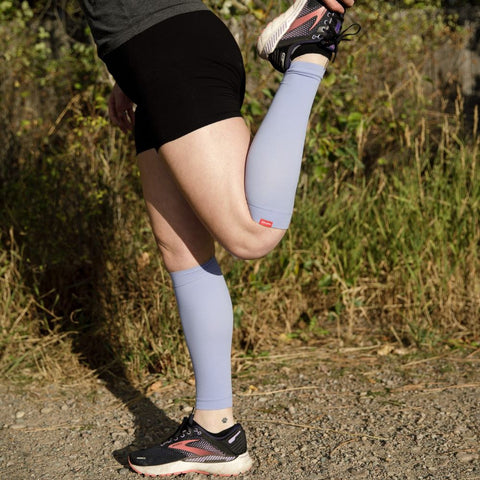
Tips for Using Compression Sleeves Effectively
Calf sleeves can prevent injury, help you recover quicker from exercise, and give you an overall feeling of well-being and lightness in the legs. If you’re still wondering how to wear compression sleeves, here are a few top tips to get you started:
- You can wear compression sleeves for several hours, even the whole day. There is no specific time limit, but we advise starting with a couple of hours first, then adding on time as you get more comfortable using them;
- Always wash and care for your sleeves correctly. Check the label and wash them in regular detergent, without added bleach or softener. Leave them to air dry so they can keep their elasticity for longer;
- If you wear sleeves after a calf strain, ensure you have them on when you walk and when you eventually return to running;
- Double up with ice and rest when you’re injured. Compression alone won’t allow you to recover from an injury, but it can be really helpful alongside other methods. Consult with your doctor first.
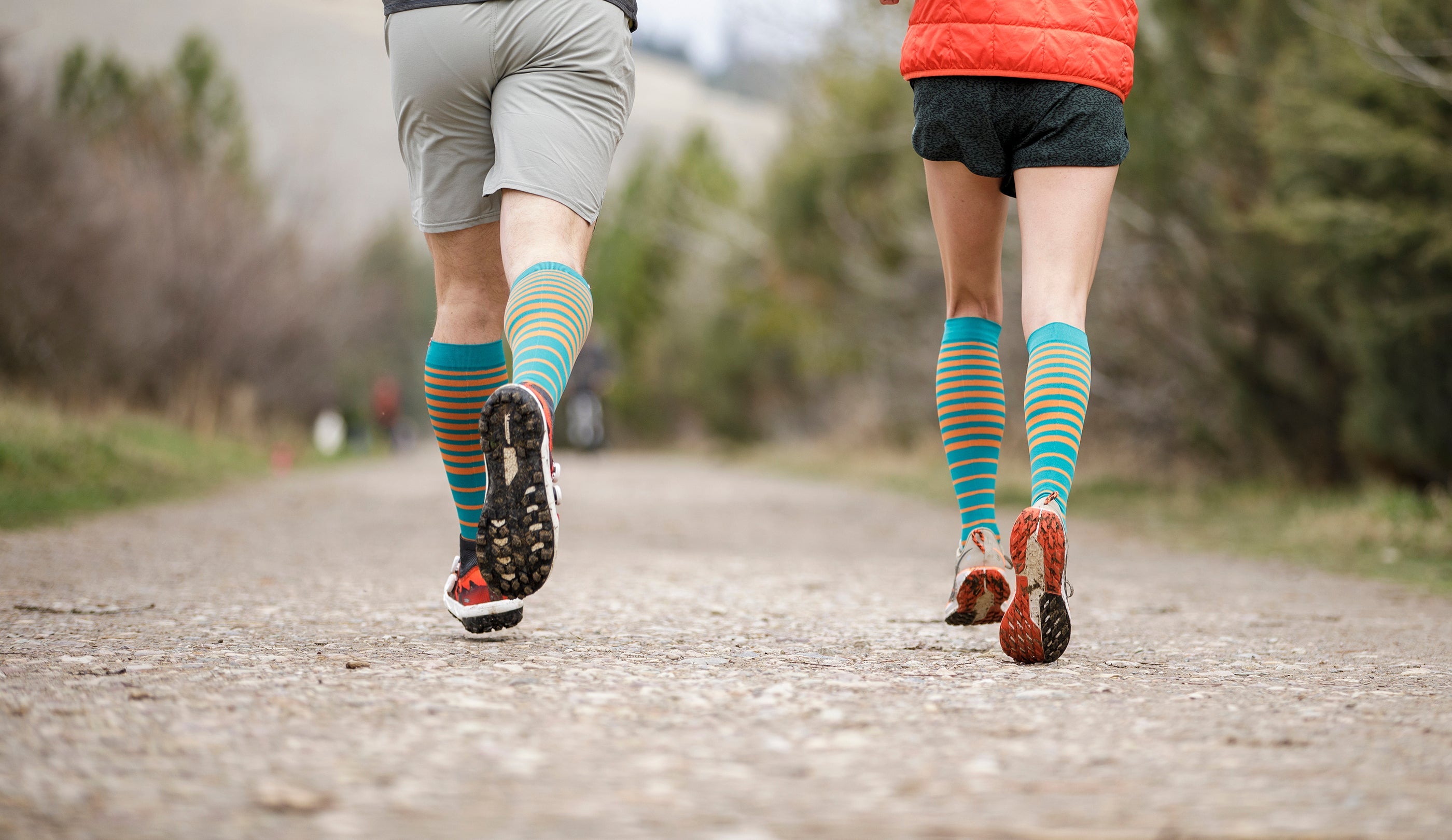









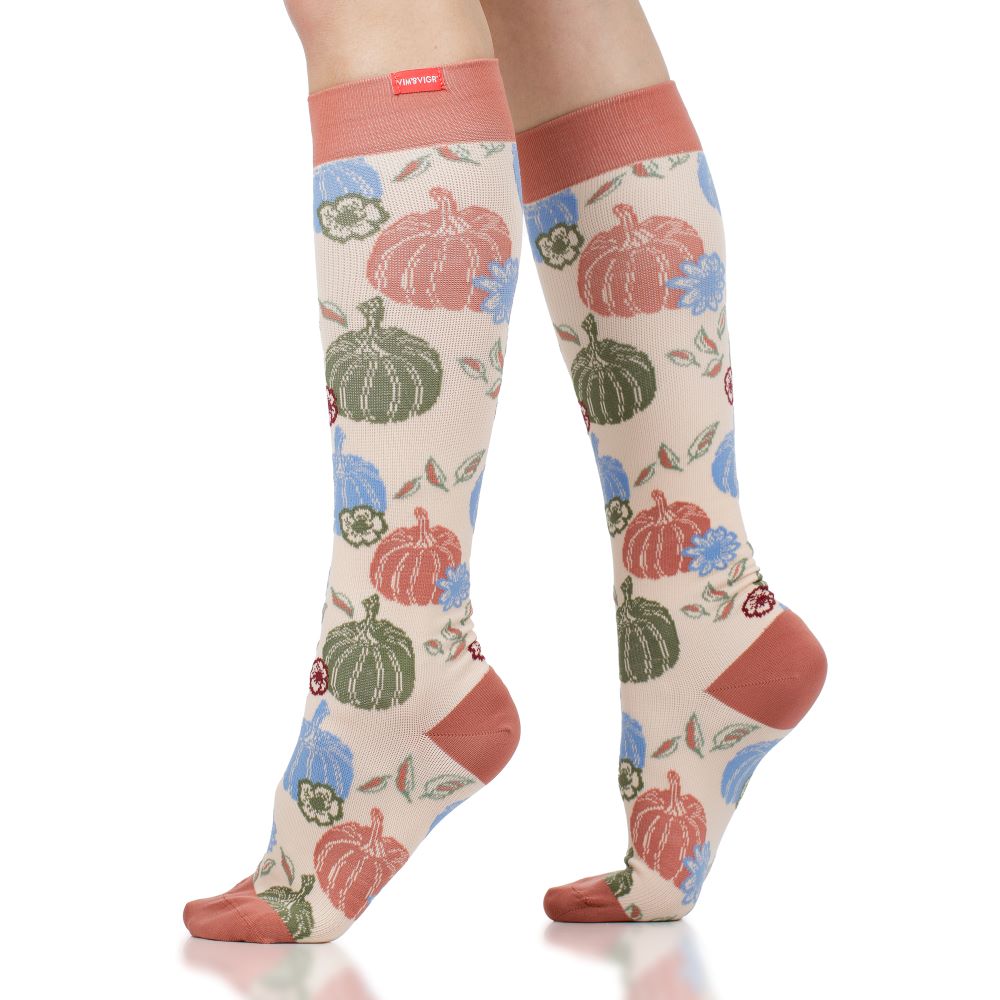
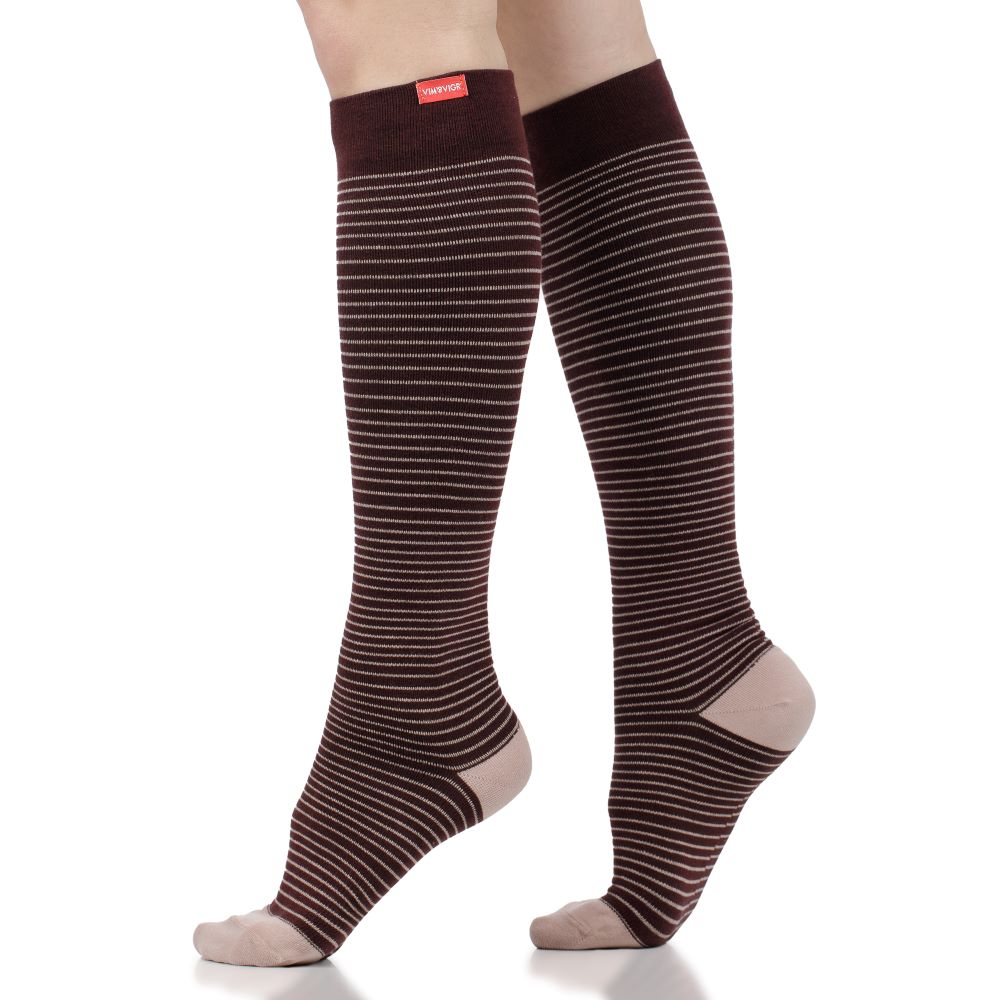
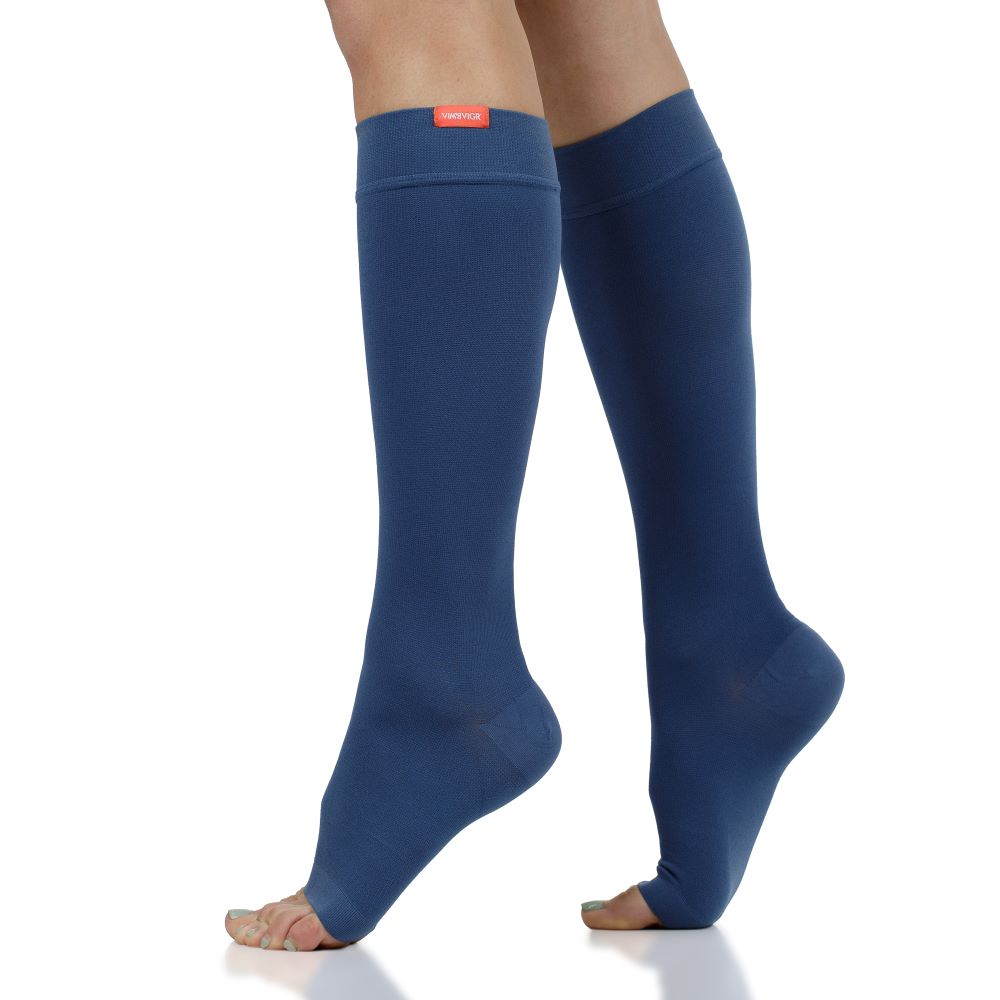






Leave a comment